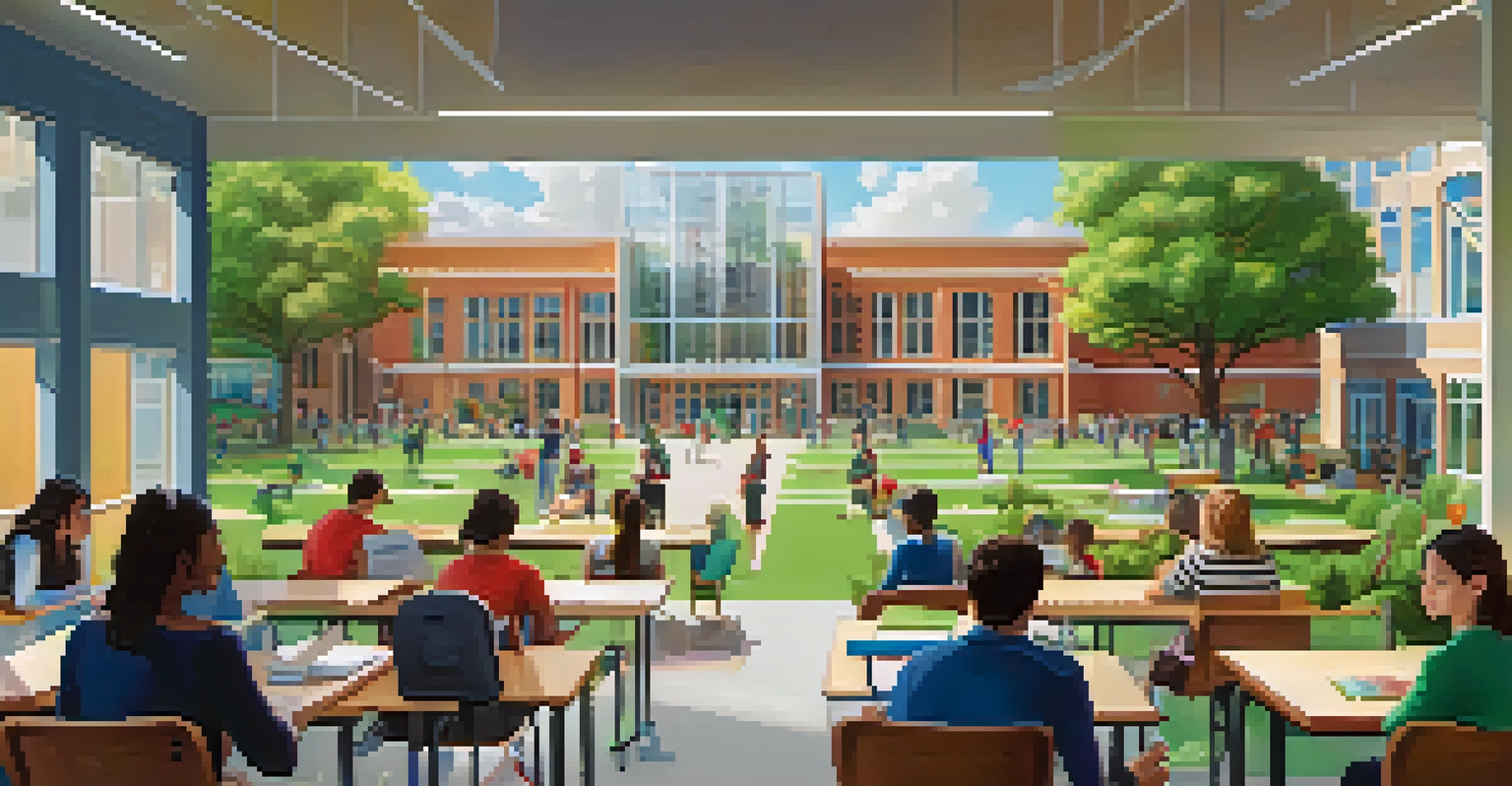The Impact of COVID-19 on Higher Education Institutions

Shift to Online Learning: A New Era for Education
The rapid transition to online learning during COVID-19 marked a significant shift in higher education. Universities scrambled to adapt, implementing digital platforms to continue classes. This shift not only changed how students interacted with their courses but also how educators approached teaching.
Education is the most powerful weapon which you can use to change the world.
While many institutions had some experience with online tools, the pandemic forced a complete overhaul of traditional methods. Professors learned to engage students through screens, using Zoom and other platforms to facilitate discussions that would have once happened in person. This change highlighted both the potential and challenges of virtual education.
As a result, many institutions are now considering a hybrid model for the future, blending online and in-person teaching. This new approach offers flexibility, catering to diverse learning preferences and needs. However, it also raises questions about accessibility and the quality of education in a digital format.
Financial Strain: The Economic Impact on Institutions
COVID-19 brought unprecedented financial challenges to higher education institutions. With enrollment numbers dropping and operational costs rising, many universities faced significant budget cuts. This has led to difficult decisions regarding staff layoffs, program eliminations, and even campus closures.

The decline in international students, who often pay higher tuition rates, further exacerbated these financial strains. Institutions that relied heavily on this demographic found themselves in dire situations, prompting a reevaluation of their recruitment strategies. It became clear that diversification was essential to ensure financial stability.
Shift to Hybrid Learning Models
The pandemic has prompted institutions to consider a blend of online and in-person education to enhance flexibility and cater to diverse learning preferences.
In response, many universities have sought new funding sources, including government assistance and partnerships with private sectors. As they navigate this financial landscape, institutions are also rethinking their long-term strategies to build resilience against future crises.
Changes in Student Enrollment Patterns Post-Pandemic
The pandemic has led to notable shifts in student enrollment patterns. Many prospective students reconsidered their options, leading to increased interest in online degree programs and community colleges. This trend reflects a desire for more affordable and flexible education solutions.
The beautiful thing about learning is that no one can take it away from you.
Additionally, some students opted for gap years or deferred their enrollments, further impacting overall numbers. This pause allowed them to reassess their goals and consider how the job market has changed due to COVID-19. As a result, institutions must adapt their marketing strategies to attract these students.
In response to these changes, colleges are enhancing support services, focusing on mental health and career guidance. By addressing the unique needs of students in this new landscape, higher education institutions can better position themselves for future success.
Mental Health Challenges Among Students and Faculty
The pandemic has significantly impacted the mental health of both students and faculty. The isolation and uncertainty caused by COVID-19 led to increased anxiety, depression, and stress levels among many individuals in the academic community. Institutions are now recognizing the importance of addressing these mental health challenges.
To support their communities, many colleges have expanded mental health resources, offering virtual counseling and wellness programs. These initiatives aim to foster a sense of connection and provide coping strategies for those struggling. The need for accessible mental health services has never been more urgent.
Financial Challenges for Universities
COVID-19 has caused significant financial strain on higher education, resulting in budget cuts and a reevaluation of recruitment strategies.
This increased focus on mental health is likely to have lasting effects on campus culture. By prioritizing well-being, institutions can create a more supportive environment that encourages open discussions about mental health and reduces stigma associated with seeking help.
Innovations in Teaching and Learning During the Pandemic
The challenges posed by COVID-19 have sparked a wave of innovation in teaching methods. Educators have experimented with various digital tools and creative approaches to engage students remotely. From interactive virtual labs to gamified learning experiences, the pandemic has pushed boundaries.
These innovations have not only enhanced online learning but also provided valuable lessons for future teaching practices. Many educators are now more equipped to incorporate technology into their classrooms, regardless of the format. This evolution opens the door for a more dynamic and interactive learning environment.
As institutions embrace these changes, they can foster a culture of continuous improvement in education. By prioritizing innovation, colleges and universities can better serve their students and prepare them for a rapidly changing world.
Equity and Access: Addressing the Digital Divide
The shift to online learning during the pandemic highlighted existing disparities in access to technology and resources. Students from underserved communities faced significant challenges in participating fully in their education. This digital divide raises critical questions about equity in higher education.
In response, many institutions have taken steps to ensure that all students have the necessary tools to succeed. Initiatives such as providing laptops, internet access, and digital literacy training have become increasingly common. These efforts aim to level the playing field and support students from diverse backgrounds.
Focus on Mental Health Support
The increased stress and anxiety caused by the pandemic has led institutions to prioritize mental health resources for both students and faculty.
Moving forward, colleges must continue to prioritize equity and access in their strategies. By addressing these issues, higher education institutions can create a more inclusive environment that empowers all students to thrive, regardless of their circumstances.
Future Trends in Higher Education Post-COVID-19
As higher education institutions emerge from the pandemic, several trends are likely to shape the future landscape. The growth of online and hybrid learning models is expected to continue, providing more flexible options for students. This shift signifies a departure from traditional, one-size-fits-all education.
Additionally, the focus on mental health and well-being is likely to remain a priority for institutions. As the understanding of mental health evolves, colleges will increasingly integrate wellness initiatives into their programs and services. This holistic approach benefits both students and faculty alike.

Finally, the ongoing need for innovation will drive institutions to rethink their curricula and teaching methods. By embracing change and fostering adaptability, higher education can better prepare students for a future that is constantly evolving, ultimately leading to a more resilient academic community.